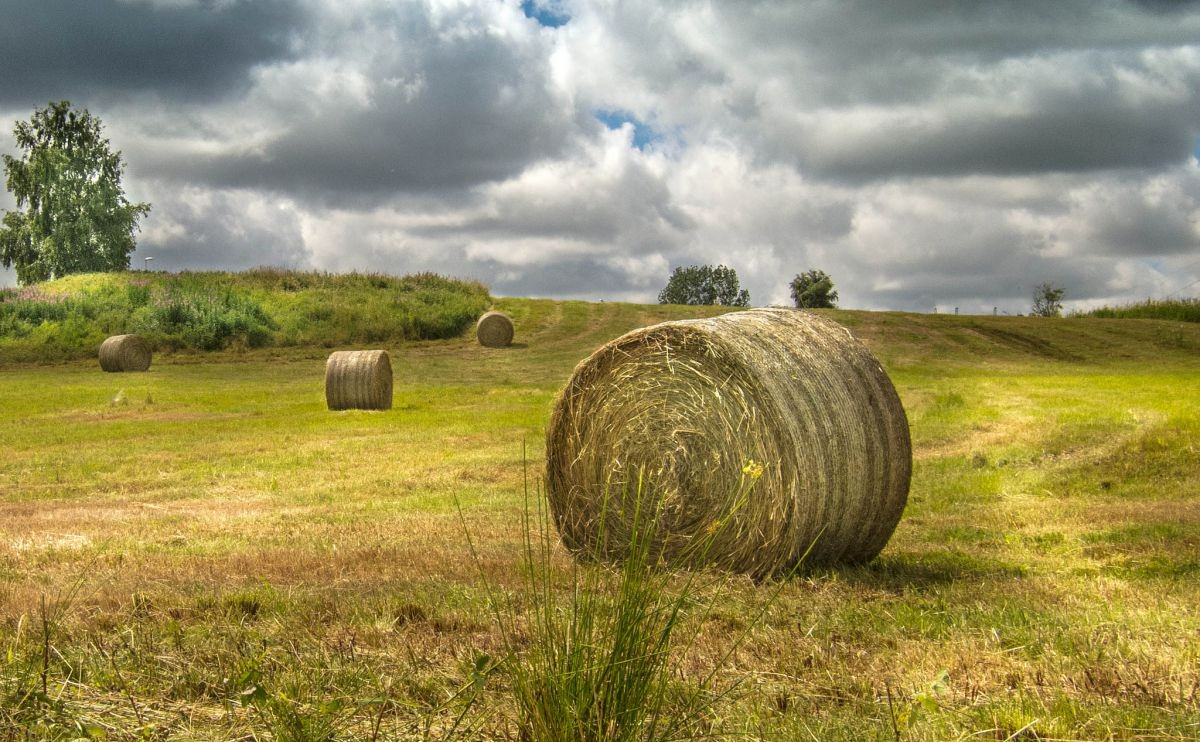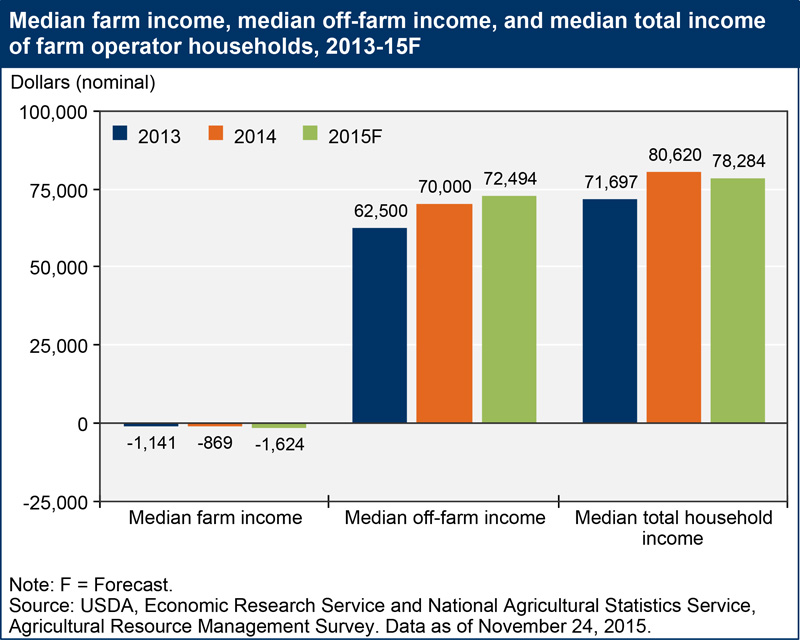Net Cash Farm Income Is Way Down: What Does That Mean?
The horrendously complex economic side of farming.
Net Cash Farm Income Is Way Down: What Does That Mean?
The horrendously complex economic side of farming.

NCFI, says AgProfessional, citing a USDA report from the Economic Research Service (a division of the USDA), dropped this past year by a whopping 28 percent, from $128.6 billion to $93 billion. This figure, which we’ll explain in a second, reached record highs in 2012 and 2013 and has been steadily dropping ever since, but this 2015 figure is way lower than it’s been – the lowest, in fact, since 2009. Everything’s down: dairy, hogs, broiler chickens, corn, soybeans. The median income, an easier figure to understand, is down, too: $78,284 in 2015, down from $80,620 in 2014.
A primary bit of confusion here”“among thousands of other wildly confusing financial things that farmers have to deal with regularly – is the varying ways in which farmers and organizations like the USDA actually describe their earnings. Basically: The USDA has long had a difference between “farm income” and “cash income,” along with further and more easily understood differences between gross and net. (Gross income of any sort is the money a farmer took in, while net income is the gross minus expenses, which are things like the cost of feed, seeds, rent, and/or wages to employees.)
Gross cash income is the simpler one: It’s simply the total of all the money you took in, including loans or grants from the government. So earnings from a farmer’s livestock, soybeans, or heirloom green zebra tomatoes, plus government assistance, equals gross cash income.
Gross farm income, on the other hand, is tricky because it includes anything a farmer could have earned money from, but actually kept. That would include any of those livestock , soybeans, or heirloom green zebra tomatoes that the farmer or farmer’s family ate, plus the estimate money that a farmer could have gotten from renting out houses or land but instead kept.
Net cash income, again, is pretty simple, being basically what you’d think of as the money a farmer gets to keep. It’s the gross cash income – meaning, all the cash that comes in – minus any expenses, which would include raw materials, employees, and even payments on debt.
Net farm income is a freaking mess. It’s the gross farm income minus all kinds of guesswork, including depreciation of land or equipment, household expenses, inventory changes, and more. It is an attempt to quantify the long-term prospects of a farm, which net cash income doesn’t really do.
You’ll notice none of these four are NCFI, and that’s because NCFI is secretly another name for…net cash income. That’s the one that’s pretty simple; a fairly easy way to judge exactly how much money a farmer takes home each year. And that’s why it’s so volatile: This 2015 one is responding to a general downturn in prices across the board thanks to a host of different causes, ranging from massive droughts in the west to disease in the Midwest.
But NCFI, or net cash income, or whatever you want to call it, changes more rapidly than net farm income, and the USDA has programs designed to counteract it, especially by injecting more government funds into farms. And that’s why, as you can see in the chart below from the USDA that this is actually kind of a minor dip – and median income is still a lot higher in 2015 than it was in 2013, even though 2013’s NCFI was way higher.

This is all ridiculously confusing and probably not of interest to non-farmers, but it’s meant to illustrate just how horrendously tricky the economic side of farming is. It’s not a wholesome, simple way of life in which you grow a carrot and sell a carrot. Economically, a farmer’s life is exponentially more difficult to figure out than most professions.
Follow us
This work is licensed under a Creative Commons Attribution-NoDerivatives 4.0 International License.
Want to republish a Modern Farmer story?
We are happy for Modern Farmer stories to be shared, and encourage you to republish our articles for your audience. When doing so, we ask that you follow these guidelines:
Please credit us and our writers
For the author byline, please use “Author Name, Modern Farmer.” At the top of our stories, if on the web, please include this text and link: “This story was originally published by Modern Farmer.”
Please make sure to include a link back to either our home page or the article URL.
At the bottom of the story, please include the following text:
“Modern Farmer is a nonprofit initiative dedicated to raising awareness and catalyzing action at the intersection of food, agriculture, and society. Read more at <link>Modern Farmer</link>.”
Use our widget
We’d like to be able to track our stories, so we ask that if you republish our content, you do so using our widget (located on the left hand side of the article). The HTML code has a built-in tracker that tells us the data and domain where the story was published, as well as view counts.
Check the image requirements
It’s your responsibility to confirm you're licensed to republish images in our articles. Some images, such as those from commercial providers, don't allow their images to be republished without permission or payment. Copyright terms are generally listed in the image caption and attribution. You are welcome to omit our images or substitute with your own. Charts and interactive graphics follow the same rules.
Don’t change too much. Or, ask us first.
Articles must be republished in their entirety. It’s okay to change references to time (“today” to “yesterday”) or location (“Iowa City, IA” to “here”). But please keep everything else the same.
If you feel strongly that a more material edit needs to be made, get in touch with us at [email protected]. We’re happy to discuss it with the original author, but we must have prior approval for changes before publication.
Special cases
Extracts. You may run the first few lines or paragraphs of the article and then say: “Read the full article at Modern Farmer” with a link back to the original article.
Quotes. You may quote authors provided you include a link back to the article URL.
Translations. These require writer approval. To inquire about translation of a Modern Farmer article, contact us at [email protected]
Signed consent / copyright release forms. These are not required, provided you are following these guidelines.
Print. Articles can be republished in print under these same rules, with the exception that you do not need to include the links.
Tag us
When sharing the story on social media, please tag us using the following: - Twitter (@ModFarm) - Facebook (@ModernFarmerMedia) - Instagram (@modfarm)
Use our content respectfully
Modern Farmer is a nonprofit and as such we share our content for free and in good faith in order to reach new audiences. Respectfully,
No selling ads against our stories. It’s okay to put our stories on pages with ads.
Don’t republish our material wholesale, or automatically; you need to select stories to be republished individually.
You have no rights to sell, license, syndicate, or otherwise represent yourself as the authorized owner of our material to any third parties. This means that you cannot actively publish or submit our work for syndication to third party platforms or apps like Apple News or Google News. We understand that publishers cannot fully control when certain third parties automatically summarize or crawl content from publishers’ own sites.
Keep in touch
We want to hear from you if you love Modern Farmer content, have a collaboration idea, or anything else to share. As a nonprofit outlet, we work in service of our community and are always open to comments, feedback, and ideas. Contact us at [email protected].by Dan Nosowitz, Modern Farmer
January 8, 2016
Modern Farmer Weekly
Solutions Hub
Innovations, ideas and inspiration. Actionable solutions for a resilient food system.
ExploreExplore other topics
Share With Us
We want to hear from Modern Farmer readers who have thoughtful commentary, actionable solutions, or helpful ideas to share.
SubmitNecessary cookies are absolutely essential for the website to function properly. This category only includes cookies that ensures basic functionalities and security features of the website. These cookies do not store any personal information.
Any cookies that may not be particularly necessary for the website to function and are used specifically to collect user personal data via analytics, ads, other embedded contents are termed as non-necessary cookies.